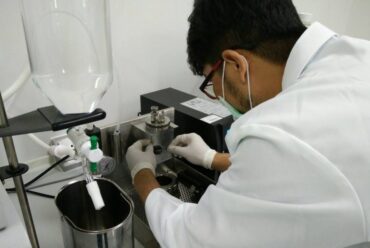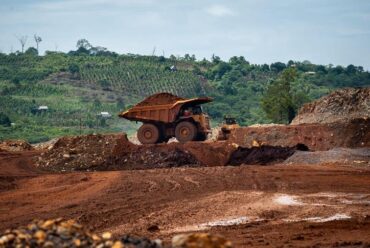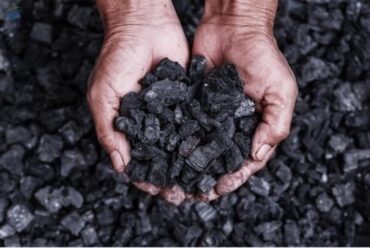The Importance of Fertilizer Inspection and Testing For The Agricultural Industry
Fertilizer Inspection and Testing – One of the important parts of agriculture is how we nurture the plants and give them the proper treatment, they will need the sun, nutrients, and water to grow and the said nutrient can come from water or soil. Crops are more likely to grow well producing high yields when there’s an ample amount of nutrients in the soil.
One that is a source of an important and absent nutrient for any agricultural soil. They have specific content or a mixture of the nutrients they claim to supplement.
Why Fertilizer Inspection and Testing is Important on agriculture
So looking at how important fertilizer is in the agriculture world, we also need to know why fertilizer inspection and testing are also important and how it’s affecting the soil and the plant. The nutrients needed are the form for the basic parameter of fertilizer testing.
There are also other parameters that will be tested such as Phosphate, urea, potash, Nitrogen, Normal superphosphate (SSP), Triple superphosphate (TSP), Monoammonium phosphate (MAP), Diammonium phosphate (DAP), sulphur, and Muriate of potash.
The three main nutrients that are needed in fertilizers are N (Nitrogen), K (potassium), and P (Phosphate) are available, and then mixing two or more nutrients treating and purifying them to be ready to be used and absorbable by plants.
Phosphate
Phosphorus is in the form of a salt of phosphoric acid or phosphate, which can be obtained naturally from phosphate rock or naturally occurring mineral deposits. Examples are sediments once at the bottom of the ancient seas.
Mineral deposits are the most common raw material used by phosphate fertilizers.
Nitrogen
78% of nitrogen is how much the earth’s atmosphere contains, which in itself, nitrogen is in a chemically inert form that cannot be used for plants except legumes. There will be a lot of energy that needs to use to convert nitrogen to a form that can be used for plants.
In the part of the 20th century, the production of ammonia from nitrogen was made possible by developing the Haber-Bosch process. Examples of the most important fertilizers of nitrogen-based are ammonium nitrate and urea.
Sulphur
Sulphur used by fertilizers is the one by-product of other industrial processes, the most common will be Ammonia Sulphate (AS)/Calcium Ammonium nitrate (CAN/ ammonium nitrate (AN)/Urea
Potash
Potassium that is used in fertilizers can be found in a salt form that’s called potash, which deposits are derived from the evaporated seawater.
Read also : All About Grain Inspection Service
How About Inspection And Testing
Sometimes, or a lot of times any chemicals used in fertilizers can transfer from the soil to the vegetable when harvested and will then be consumed by humans. Which can mean, either good or bad for consumption.
While also in agricultural research, it was found that a certain chemical in fertilizers made the soil infertile in the long run.
In another case, the chemical in the soil can get washed off into the groundwater and thus connect to the river below the ground and can also then pollute the water then. That is why we need to do fertilizer inspection and testing, to avoid the vicious cycle that unchecks and toxic fertilizers posed.
The method of analysis will help to assess the main components, the primary nutrient, and also the harmful components in fertilizers. These tests are very important and pivotal to identifying the type of nutrients in the fertilizers and also the quality and composition of the final product.
fertilizer inspection and testing, use an optical transducer that has been developed to help measure as well as detect the resent of the N, K, and P in soil.
This transducer is needed to determine how much extra content from these nutrients needs to be added to the soil to increase its fertility.
Using this method will help improve soil quality without using too many fertilizers and know how much is needed in order for it to be effective and not overused the fertilizers in the soil.
Onto the next explanations, inspections are depending on the material being handled, material constructions, and external environment and will likely run into CUI (corrosive under insulations) issues (which are currently being developed by API for an inspection on CUI).
You need to include NDE/NDT and inspection on reformer heather if there’s one and the NDE/NDT is focused on creep and management for remaining life.
Do some extra research to know the list of things you need to consider to inspect, not just how you produced fertilizers, storing and how the process to make the fertilizers can also be highly dangerous and also sensitive.
There may be areas with high temperature attach (HTHA) that need to be considered too. The temperature pressures and hydrogen partial pressures versus material of constructions.
You need to be completely aware of the corrosive fumes around the equipment can also cause external corrrosions, you can minimize leaks when you pay attention to this kind of thing.
In the world of fertilizer inspection and testing services, they will help you with Draft surveys, hatch and hold surveys, Bag checks, laboratory analysis, radiations certifications, photographic essays, sampling and sealing, supervision of transshipment, supervision of calibrations/ weighing, temperature control/ checks.
Fertilizer inspection and testing services are a professional in handling the testing and inspections for dry, liquid mineral fertilizers in any shape either in bagged form or bulk, and all include phosphate, nitrogen, sulphur, potash, kieserite, and compound fertilizers. Also, they can help you in every stage of the supply chain from the plant to the port.
Fertilizer inspection and testing services will help the client to trade securely with the best service worldwide, they will cover Nitrogen products (AN, AS, Urea prilled/ Granulated), potash products (SOP. NOP, MOP), Phosphate products (MAP, DAP, TSP, Rock phosphate, SSP), compound products (NPS, NPK) and others like sulphur, kieserite.
Monitoring in the pre-shipment inspections, sampling, and analysis. Stock monitoring in warehousing, verifications of the storage conditions, bagging supervisions and checking on the marking and packing.
There is more information about fertilizer inspection and testing that you might not yet know, check out our website to read more of our useful articles.







